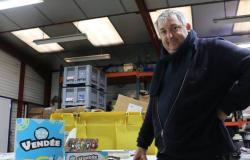In the immensity of space, astronauts face daunting challenges. Falls can be particularly dangerous and difficult to manage. Fortunately, a technological breakthrough promises to change that. This new exoskeleton, developed by researchers at MIT, could forever transform the way astronauts interact with their environment.
Could a vibrating device really alleviate Parkinson's suffering: researchers surprised
A crucial device for the safety of lunar missions
Lunar missions require meticulous preparation. Each extra-vehicular exit is planned down to the smallest detail to minimize risks.
Oxygen constraints limit the time available for each mission, leaving little room for error. A fall can require considerable effort to get back up, which is far from ideal.
Two titanic tunnel boring machines in action: discover how these machines dig into the depths of China's underground and redefine the future of infrastructure
An innovation from MIT
MIT has developed a robotic exoskeleton that fits into astronauts' spacesuits. This device, called Superlimbsconsists of a belt and two mechanized arms.
In the event of a fall, the exoskeleton helps the astronaut get up quickly, thus avoiding prolonged contact with potentially toxic lunar dust.
Advanced features for successful missions
Each arm of the exoskeleton is equipped with grippers capable of gripping handrails or other accessories. This allows astronauts to move more easily between the space vehicle and the surface of the Moon.
iPhone 16, Apple Watch X and other surprises: these 4 revolutionary announcements from Apple's next keynote
The technology thus makes it possible to save energy, a precious asset on the Moon, and to devote it to essential mission tasks.
| ???? Security | The exoskeleton prevents falls and reduces risks. |
| ???? Innovation | Robotic arms to assist in movement. |
| ???? Technology | Advanced integration into spacesuits. |
| ???? Economy | Energy conservation for critical tasks. |
Promising development prospects
Harry Asada, the engineer behind Superlimbs, originally designed this system for other industrial applications. Today, this technology adapts to the needs of NASA.
The team is already considering adding lower limbs for added support while moving, promising even more dramatic progress.
As NASA prepares for its Artemis III mission, how will these innovations transform future space exploration?





